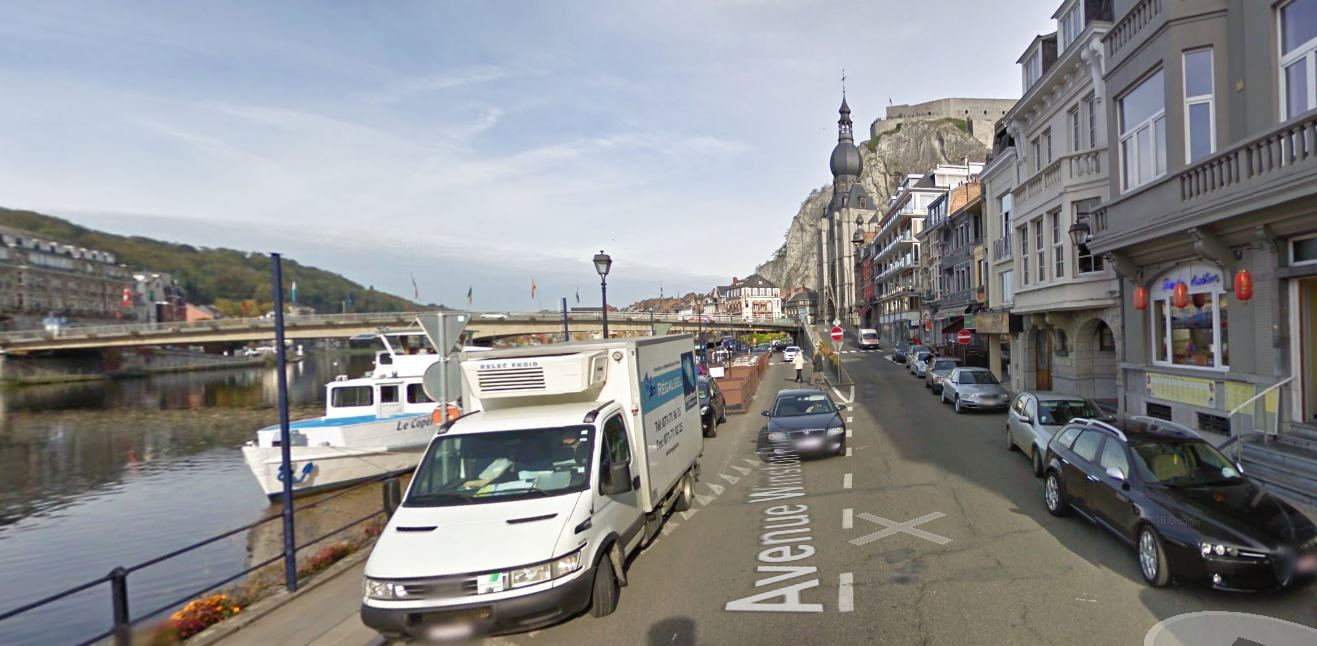The EIB lent Belfius EUR 200 million, funding half the Belgian bank's Smart Cities and Sustainable Development programme
The EU Urban Agenda urges better local government financing. Smart Cities connects the EIB with communities often too small to access its regular loans
From its first Neolithic settlement and across many centuries, the town of Dinant grew lengthwise along the Meuse, hemmed in by rocky slopes rising on both sides of the river. But the 14 000 people who live in this French-speaking community 90 km southeast of Brussels were cut off from direct access to the river by roads along the banks.
Mayor Richard Fournaux always believed Dinant’s residents should be better able to enjoy this beautiful feature of their town. With funding from the Smart Cities programme, which Belfius developed in collaboration with the European Investment Bank, Fournaux is realising that dream in the creation of La Croisette on a stretch of the Meuse’s right bank. La Croisette will divert traffic from the river’s edge, creating clearly defined zones for pedestrians, bicycles, and playgrounds.
“We’re remaking a beautiful world,” says Fournaux. “We have the chance to create infrastructure that greatly impacts life and work in our city.”

- Dinant before La Croisette
An Urban Agenda, even for small urbs
The Smart Cities programme started in June 2015. Jointly with the EIB, it has so far funded more than 30 projects in energy efficiency, sustainable mobility, and urban regeneration. Benefitting Belgian towns with almost one million inhabitants already, it’s analysing a further 150 projects. The first schemes include:
- photovoltaic panels for the village school in Silly and sports facilities in Genappe
- near-zero-energy public buildings in Schelle, Bierbeek and Gembloux
- rest homes in Sambreville, Landen, Stekene and Sint-Truiden
- a filling station for cleaner fuel in Harelbeke, to be used by waste-collection trucks in ten municipalities as well as by private vehicles
- brownfield regeneration for new civic buildings with mixed-use urban development and sustainable mobility in Wetteren
The EIB loan to the Smart Cities programme is an "intermediated loan," meaning that the Bank makes its loan to another bank which in turn lends to someone else. It's a vital tool for the Bank, because it allows it to tap into a local bank's network among municipal governments. Better funding of local and regional governments is key to the Urban Agenda for the EU, which is officially unveiled in Amsterdam on 30 May.
Francis Hayen, who heads the Smart Cities programme for Belfius, says his bank has a big advantage in operating the Smart Cities facility because it already works with almost all Belgian municipalities. As well as offering favourable interest rates because of the EIB’s backing, the programme connects small communities with sources of European funding they might not otherwise have the resources to access.
“I’m sure there are banks in other European countries that could perform this intermediary function for small municipalities,” Hayen says. “If they team up with the EIB, they could implement the same approach.”
In Dinant, the riverside project is only the beginning of Mayor Fournaux’s work with Belfius. La Croisette will attract residents and tourists, who can promenade on the riverfront as well as visit a museum at the birthplace of Adolphe Sax, inventor of the saxophone. Since they won’t be able to take their cars, there’s already a Smart Cities project underway to build parking outside the centre. Says Fournaux, “This is the start of a real conversion of our town.”
